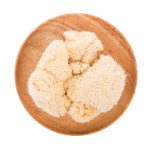Fascinating new study reveals surprisingly simple way to boost brain cell growth and memory
 (NaturalHealth365) Want better memory and healthier brain cells? You might want to incorporate this up-and-coming edible mushroom into your diet more regularly.
(NaturalHealth365) Want better memory and healthier brain cells? You might want to incorporate this up-and-coming edible mushroom into your diet more regularly.
In a recent article published in the Journal of Neurochemistry, a team of scientists from The University of Queensland details their research on an active compound found in Hericium erinaceus, commonly known as Lion’s Mane mushroom, and its effect on brain cells involved in memory.
Bioactive compound in edible mushroom activates key neural pathways involved in memory, nerve growth
In their article, the team of Australian researchers identifies Lion’s Mane mushroom as a “promising nootropic fungus” given the “numerous bioactive compounds” it contains that are known to support nerve growth and function. These compounds include polysaccharides, erinacines, hericerins, and alkaloids.
Lion’s Mane mushroom has long been used in traditional Eastern medicine to treat other conditions, including stomachaches and “as prophylactic treatment of cancers,” the authors write, but they wanted to look specifically at the effect of this mushroom on brain and nerve function.
In their experiment, the researchers extracted nootropic compounds from the mushroom and used them as a dietary supplement in rodents. Laboratory testing and microscopy imaging helped the researchers conclude that Lion’s Mane mushroom is a “potent memory enhancer,” chiefly because of the way its compounds help nerve cells grow and literally establish new connections with other cells in the brain.
The researchers classified the effects of Lion’s mane as “BDNF-like neurotrophic activity,” a nod to the infamous BDNF molecule found naturally in mammals that is known for acting as a “fertilizer for the brain.” And while more research in humans is needed to support these findings, the data does support the recommendation to consume edible mushrooms more regularly as part of a balanced diet.
Ways to add more Lion’s Mane and other mushrooms to your diet
Lion’s Mane mushrooms are native to Europe, North America, and Asia. In North America and Canada, these fungi particularly love to grow on dead and decaying hardwood trees. But while we don’t recommend foraging for wild mushrooms yourself unless you are a highly trained expert (or with someone who is), fortunately, there are plenty of ways to bring Lion’s Mane into your kitchen. Try this:
- Check out your local natural food store or farmer’s market, as these sometimes carry Lion’s Mane and other “exotic” mushrooms like Oyster, Morel, Chanterelle, Cordyceps, Turkeytail, Chaga, and Reishi mushrooms
- When you do find Lion’s Mane in its natural form, enjoy it in several ways – raw, roasted, sauteed, or even steeped as tea (anecdotally, many people say they prefer the taste of cooked Lion’s Mane over raw)
- If your budget allows, you can also try products, including powders and supplements, that contain Lion’s Mane
- Some companies sell Lion’s Mane growing “kits” so you can grow your own at home!
By the way, here’s one trick to really get the most out of your flavorful fungi:
A 2018 review article in Nutrients recommends leaving your mushrooms in the midday sun for anywhere from 15 to 120 minutes before consuming them, as this will significantly boost the amount of vitamin D they contain! Although it’s important to note, the article states that “the amount of vitamin D2 generated depends on the time of day, season, latitude, weather conditions, and exposure time.”
To increase the surface area of mushrooms exposed to the sunlight, try slicing the mushrooms first.
Sources for this article include:



